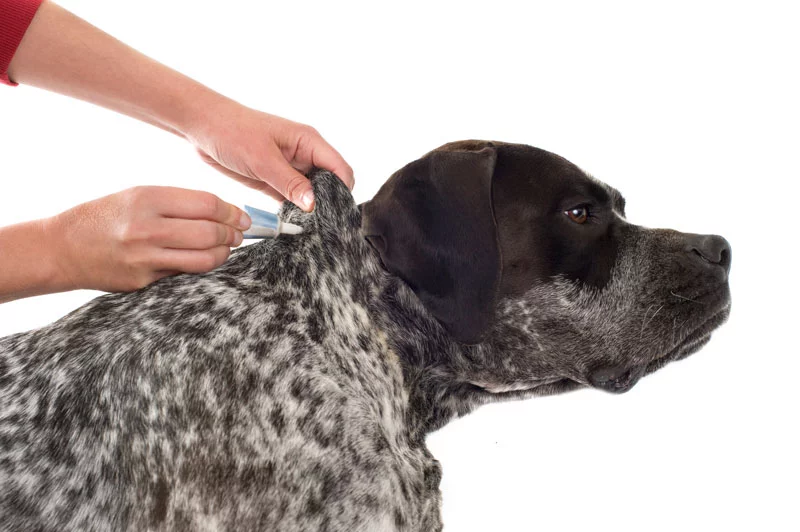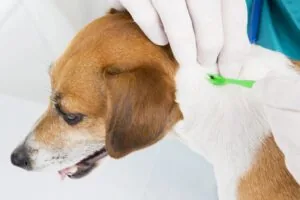Do I Really Need to Treat My Pets for Fleas/Ticks in the Fall/Winter?

While there’s no denying that Thanksgiving is a delight and the leaves changing color is an annual treat, the final point isn’t quite correct. Many pet owners assume that fleas and ticks are predominantly a problem for warm weather, that pests flourish in spring and summer, then begin to die off as the colder months set in. The natural conclusion many pet owners come to is that they only need be concerned with flea and tick treatments between March and August – but this isn’t actually the case. While there’s no denying we’ll all miss the long, hazy summer days, there’s a variety of delights to be enjoyed in the forthcoming months: the changing color of the leaves and colder days, but not the freedom from worrying about our pets and their exposure to fleas and ticks.
Fleas and ticks are resilient creatures, and while their population levels do tend to decline over the cooler months, they still pose a threat to domestic pets. Fleas and ticks are more than capable of finding warmer areas to enjoy in the winter; beneath log piles, for example, or even inside a home. The average flea lives for over 100 days which, with continued breeding in a warm space, means they are more than capable of surviving a winter. Ticks live even longer still – up to three years – so provided they find somewhere cozy, they’ll easily make it through to spring.
Flea bites may go unnoticed on some pets, cause slight irritation in others and produce extensive itching, red lesions, hair loss and even ulcers in those animals with flea allergy dermatitis, which is the result of extreme sensitivity to flea saliva. Severe flea infestations can cause anemia, especially in puppies and kittens. Fleas can also transmit several diseases, as well as tapeworm. Ticks can also be “vectors” or carriers of a number of bacterial diseases. Adult fleas are generally smaller than a sesame seed, who feed on the blood of animals. When a flea is on your pet they bite through the skin to suck up blood – in quantities of up to 15 times their body weight daily in the case of female cat fleas. If one flea finds your cat an attractive food source, you can be sure that other fleas will, too!
The best way to control flea problems is to prevent them from happening in the first place. Fortunately, developments in veterinary parasite control in recent years have made the twofold goal of eliminating fleas on pets and preventing further infestations much easier to achieve. Available for both cats and dogs, new insecticides and insect growth regulators in easy-to-use topical or oral forms not only eliminate any existing fleas, but also work long-term to prevent future infestations. This is accomplished either by killing the parasites before they can reproduce or by preventing their eggs from developing into normal adult fleas. Consult your veterinarian for advice about the proper product for your pet. Furthermore, thorough daily vacuuming of high-traffic areas and frequent washing of your pet’s bedding will also go a long way in reducing the flea population in your home. Some of the same types of topical or oral products used to control flea infestation are also effective against ticks. Tick collars are also available. Such treatments should be combined with daily examinations and tick removal for those pets, especially cats, who are frequently outdoors in areas with high tick populations. Ask your veterinarian for information about the situation in your locality.
If, despite your best efforts, you find that fleas or ticks have crawled (or jumped) onboard your pet, you will have to use a product that will kill and/or repel the parasites. Once again, you should ask your veterinarian for advice about what the most appropriate product for your pet is. And remember, it is perfectly normal to see live fleas or ticks on a pet immediately after a topical treatment, spray, shampoo, collar, etc. is applied. Many believe that this means the product is not working, but the fleas or ticks must fully absorb the product before they will be affected, which may take from a few hours to a few days.
So, whether you have an indoor or outdoor pet, good pet safety practice dictates that it’s important to maintain your flea and tick prevention methods throughout the fall and winter periods. Preventive treatment from your local veterinarian is quick and easy to apply, so you can soon get back to enjoying all the delights the cooler seasons fall and winter offer.
Share This Post
Recent Posts
About Shallowford Animal Hospital
Shallowford Animal Hospital and The Pet Spa at Shallowford are dedicated to the exceptional, compassionate care your pet deserves. Pets hold a very special place in our families, and we treat yours like our own.



